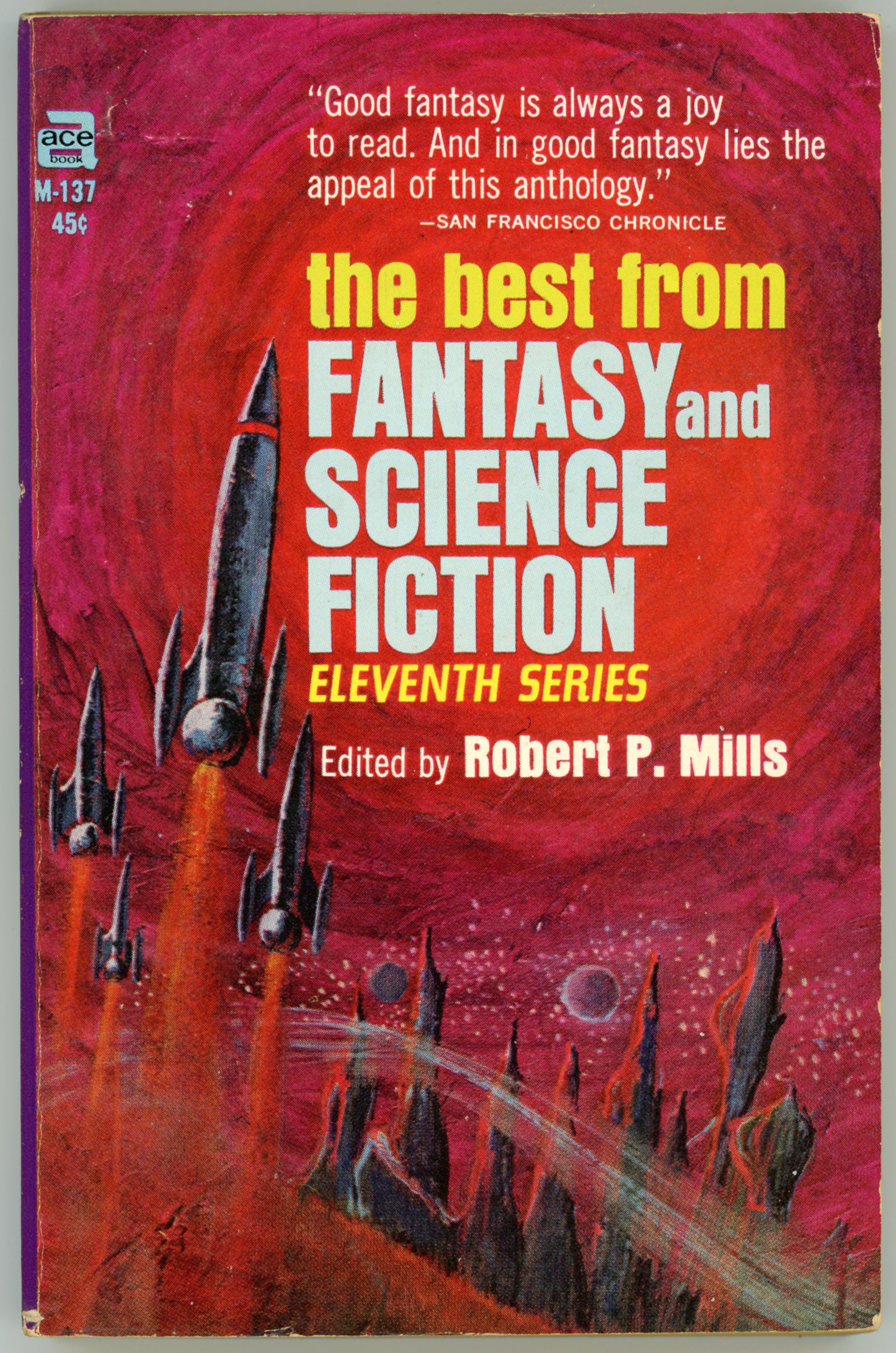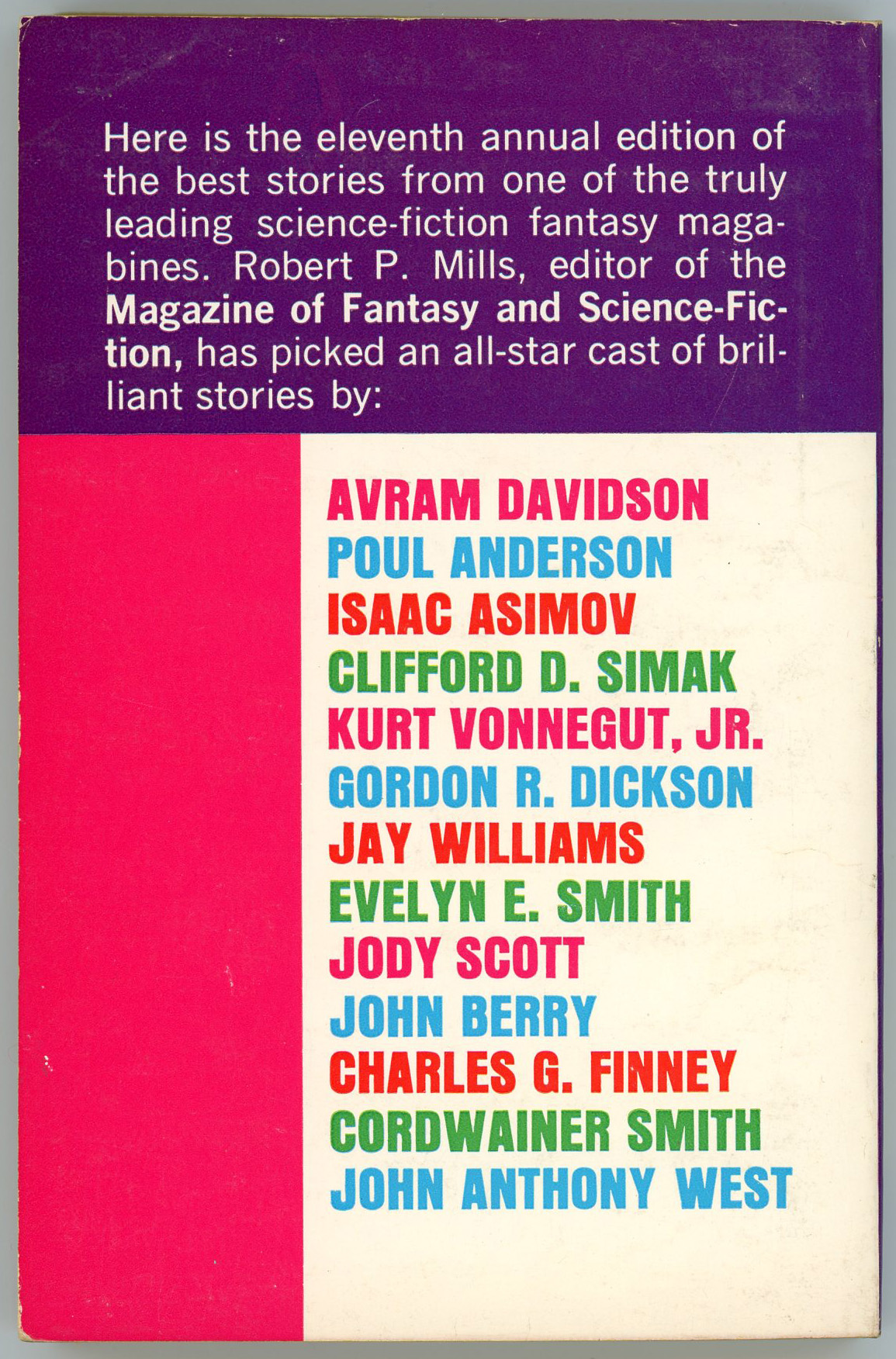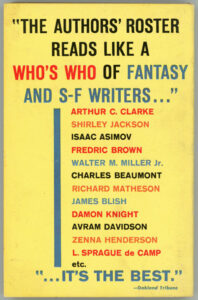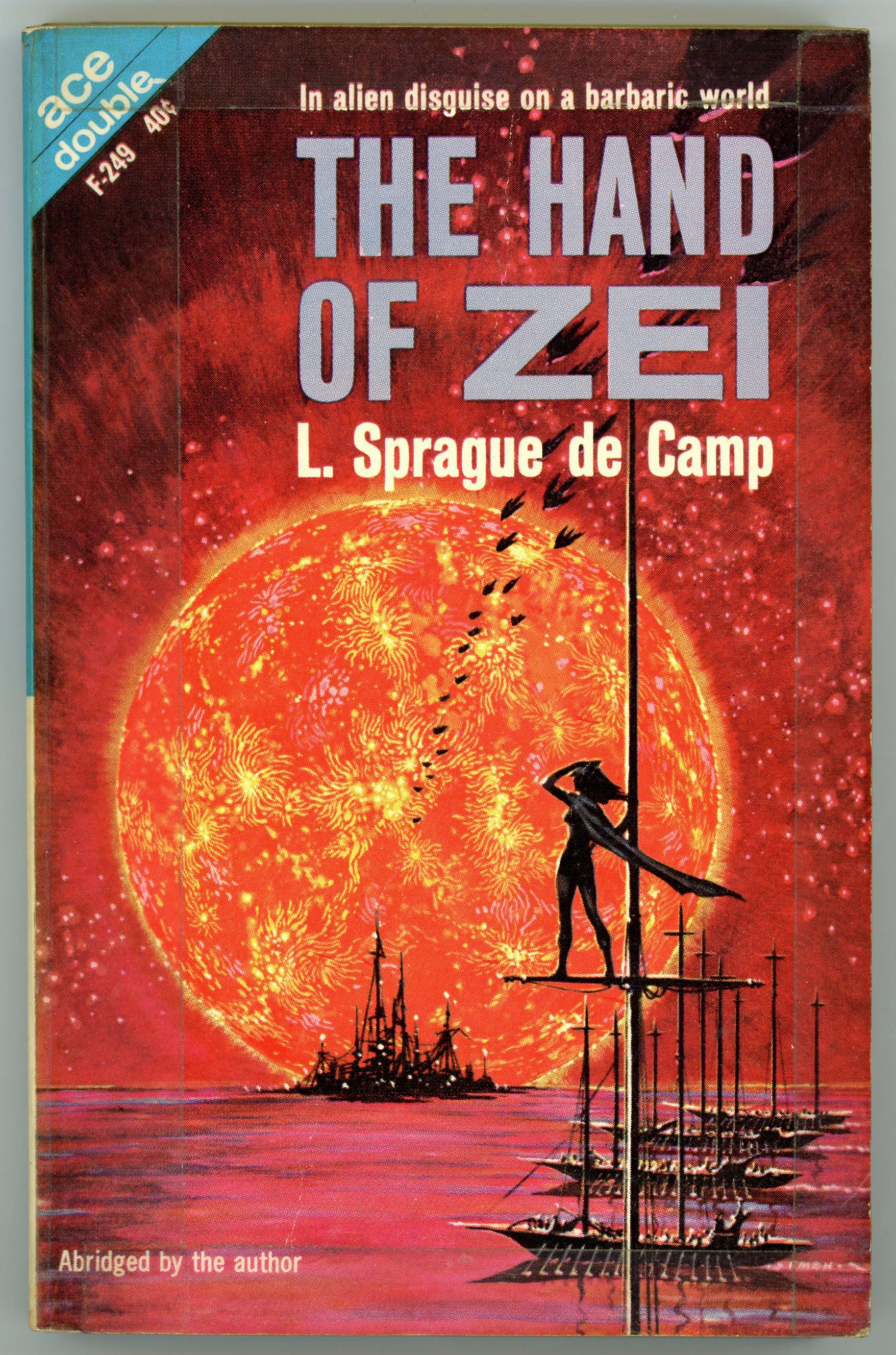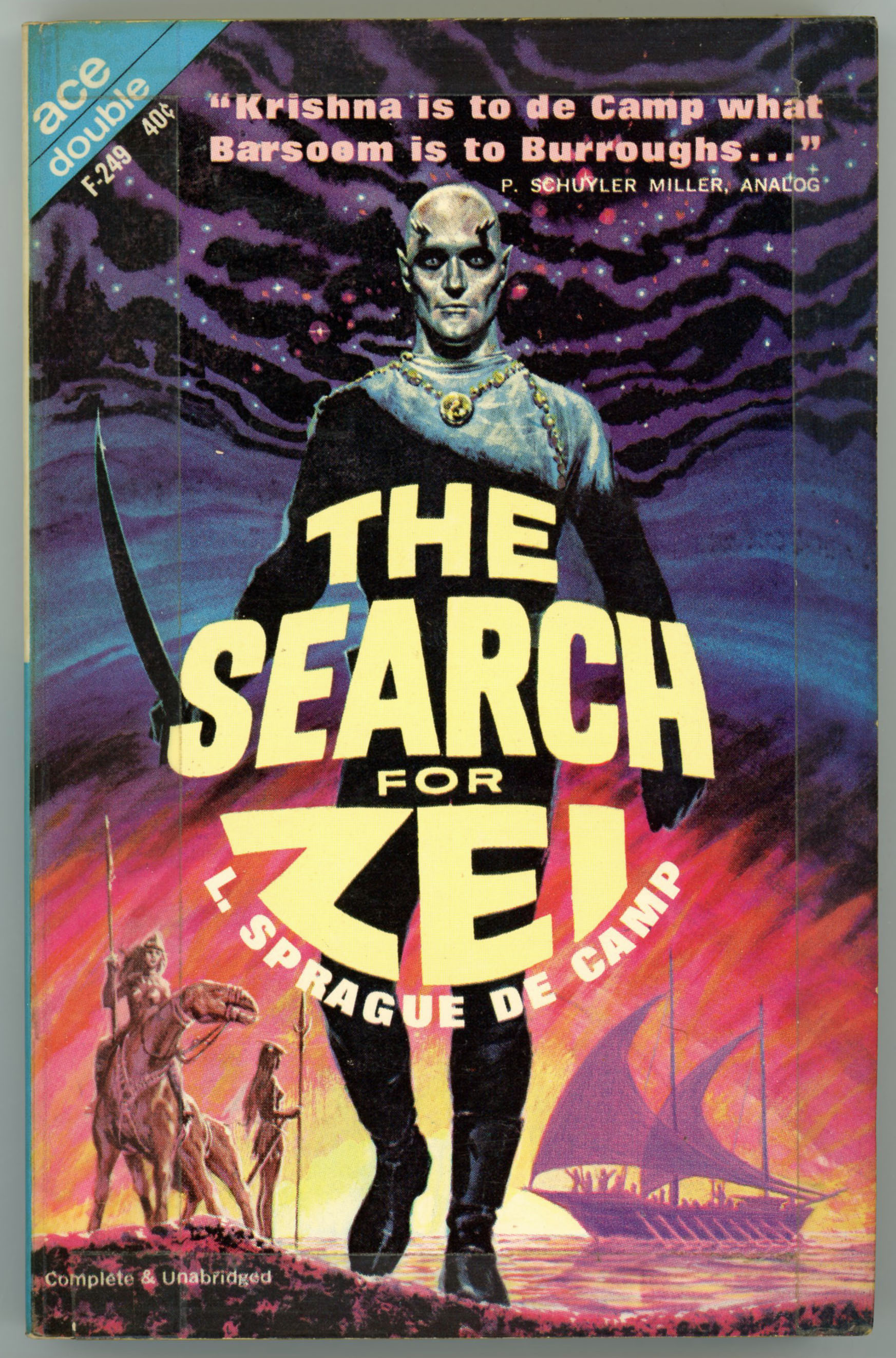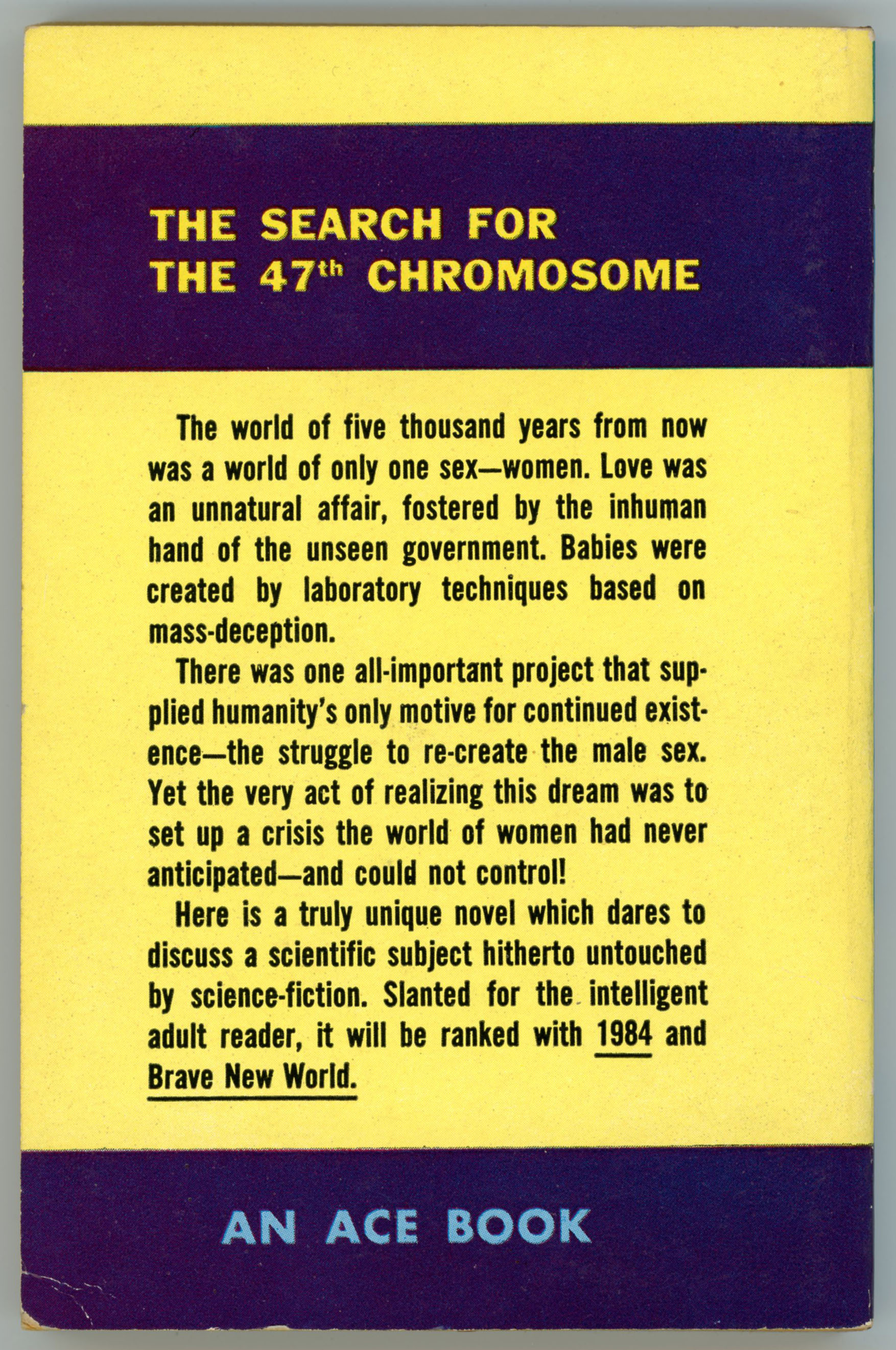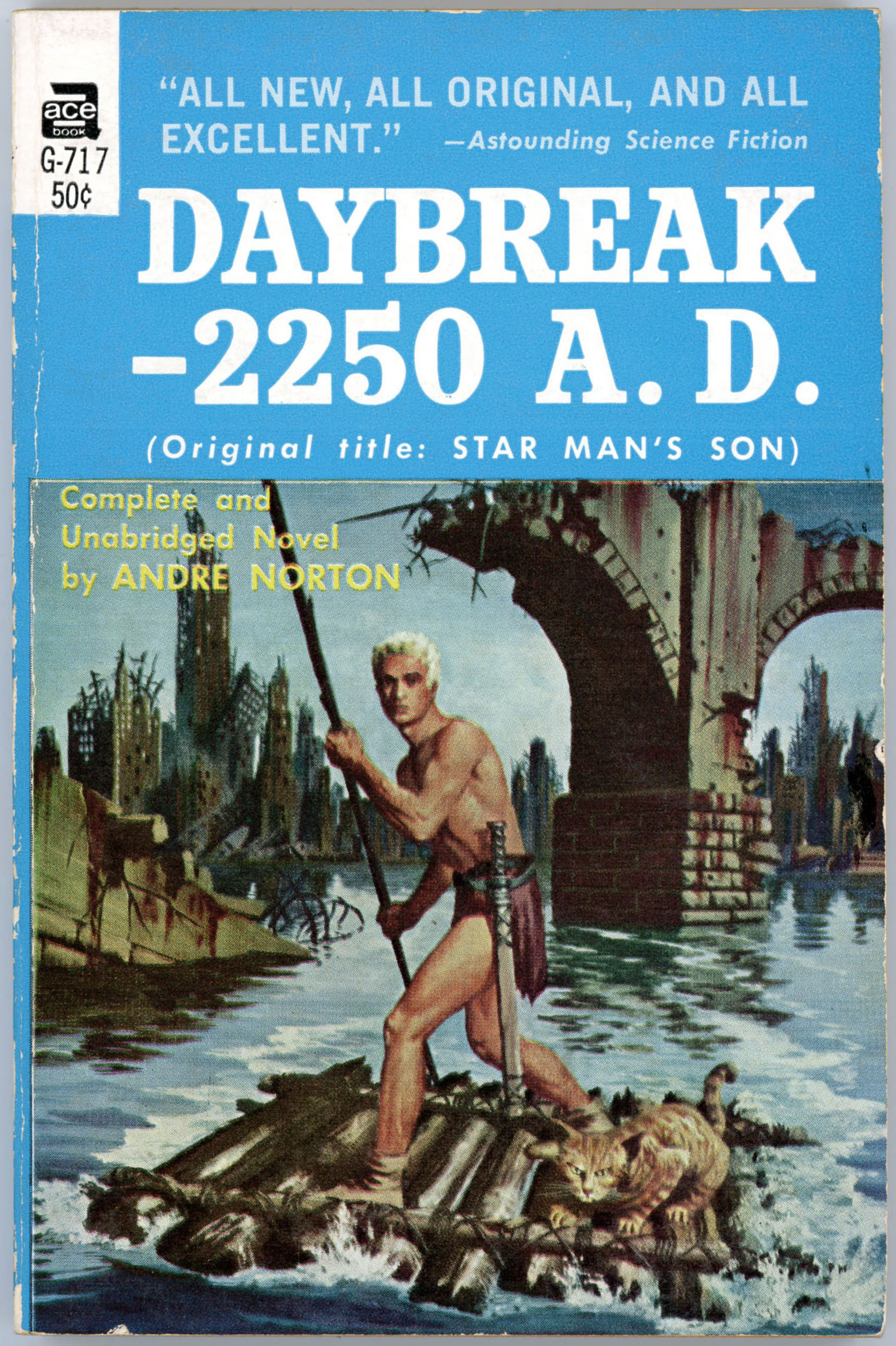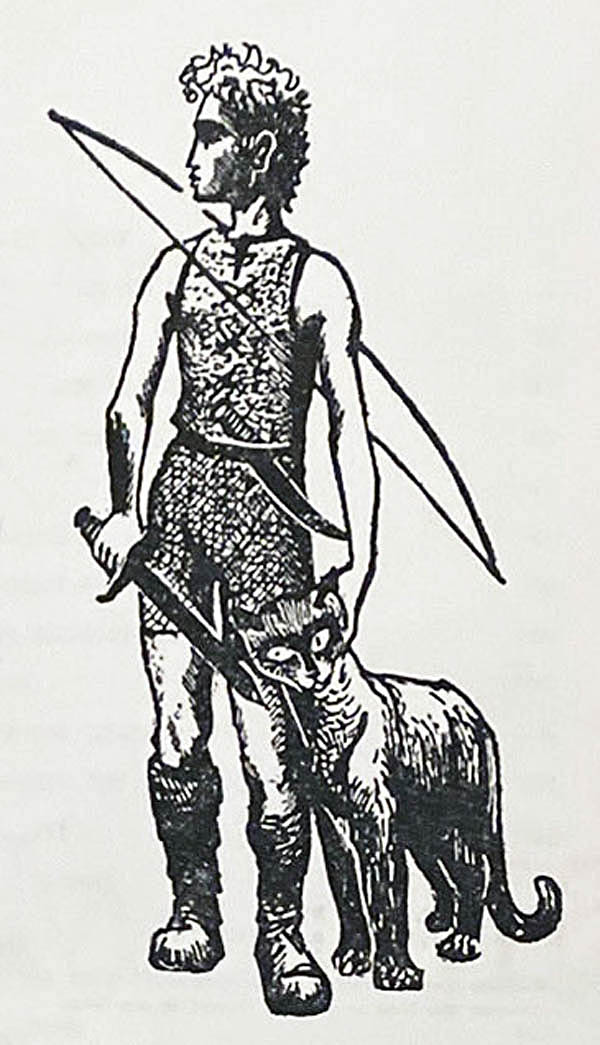“Like most Terran males your sense of self-respect is bound up
in your wage-earning capabilities,
an area in which you have grave doubts as well as extreme guilts.”
______________________________
“A knock sounded on the door of the conapt.
It could not be the Ganymedean returning because a slime mold did not – could not – knock.
Rising, Chuck went to the door and opened it.
A Terran girl stood there.”

In a ‘pape one week old he found a more or less complete article;
he lit a cigarette and read carefully.
Psychologists were needed,
it was anticipated by the US Interplan Health & Welfare Service,
because the moon had originally been a hospital area,
a psychiatric care-center for Terran immigrants to the Alphane system
who had cracked under the abnormal,
excessive pressures of inter-system colonization.
The Alphanes had left it alone, except for their traders
What was known of the moon’s current status came from these Alphane traders.
According to them a civilization of sorts had arisen
during the decades in which the hospital had been severed from Terra’s authority.
However, they could not evaluate it
because their knowledge of Terran mores was inadequate.
In any case local commodities were produced,
traded; domestic industry existed, too,
and he wondered why the Terran government felt the necessity of meddling.
He could imagine Mary there so well;
she was precisely the sort which TERPLAN, the international agency, would select-
People of Mary’s type would always succeed.
Going to the ancient picture window he stood for a time once more, gazing down.
And then, stealthily, he felt rise up within him the familiar urge.
The sense that it was pointless to go on;
suicide, whatever the law and the church said,
was for him the only real answer at this instant
He found a smaller side window that opened;
raising it, he listened to the buzz of a jet-hopper
as it landed on a rooftop on the far side of the street.
Its sound died.
He waited, and then he climbed part way over the edge of the window,
dangling above the traffic which moved below ….
From inside him a voice, but not his own, said.
“Please tell me your name.
Regardless of whether you intend or do not intend to jump.”
Turning, Chuck saw a yellow Ganymedean slime mold
that had silently flowed tinder the door of the conapt
and was gathering itself into the heap of small globes which comprised its physical being.
“I rent the conapt across the halt,” the slime mold declared.
Chuck said, “Among Terrans it’s customary to knock.”
“I possess nothing to knock with.
In any case I wished to enter before you – departed.”
“It’s my personal business whether I jump or not.”
“’No Terran is an island,’” the slime mold more or less quoted.
“Welcome to the building which we who rent apts here have humorously dubbed
‘Discarded Arms Conapts.’ There are others here whom you should meet.
Several Terrans – like yourself – plus a number of non-Ts of assorted physiognomy,
some which will repel you, some which no doubt will attract.
I had planned to borrow a cup of yogurt culture from you,
but in view of your preoccupation it seems an Insulting request”
“I haven’t moved in anything. As yet.”
He swung his leg back over the sill,
stepped back into the room, away from the window.
He was not surprised to see the Ganymedean slime mold;
a ghetto situation existed with non-Ts:
no matter how influential and highly-placed in their own societies
on Terra they were forced to inhabit substandard housing such as this.
“Could I carry a business card,” the slime mold said, “I would now present it to you.
I am an importer of uncut gems, a dealer in secondhand gold,
and, under the right circumstances, a fanatic buyer of philatelic collections.
As a matter of fact I have in my apt at the moment a choice collection of early US,
with special emphasis on mint Marks of four of the Columbus set;
would you -” It broke off.
“I see you would not.
In any case the desire to destroy yourself has at least temporarily abated from your mind.
That is good.
In addition to my announced commercial – “
“Aren’t you required by law to curb your telepathic ability while on Terra?” Chuck said.
“Yes, but your situation seemed to be exceptional.
Mr. Rittersdorf, I cannot personally employ you,
since I require no propagandistic services.
But I have a number of contacts among the nine moons; given time – “
“No thanks,” Chuck said roughly “I just want to be left alone.”
He had already endured enough assistance in job acquisition to last him a lifetime.
“But, on my part, quite unlike your wife, I have no ulterior motive.”
The slime mold ebbed closer.
“Like most Terran males your sense of self-respect is bound up in your wage-earning capabilities,
an area in which you have grave doubts as well as extreme guilts.
I can do something for you … but it will take time.
Presently I leave Terra and start back to my own moon.
Suppose I pay you five hundred skins – US, of course – to come with me.
Consider it a loan, if you want.”
“What would I do on Ganymede?”
Irritably, Chuck said, “Don’t you believe me either?
I have a job; one I consider adequate – I don’t want to leave it.”
“Subconsciously – “
“Don’t read my subconscious back to me.
And get out of here and leave me alone.”
He turned his back on the slime mold.
“I am afraid your suicidal drive will return – perhaps even before tonight”
“Let it.”
The slime mold said, “There is only one thing that can help you,
and my miserable job-offer is not it.”
“What is it then?”
“A woman to replace your wife.”
“Now you’re acting as a – “
“Not at all.
This is neither physically base nor ethereal, it is simply practical.
You must find a woman who can accept you, love you, as you are;
otherwise you’ll perish.
Let me ponder this.
And in the meantime, control yourself.
Give me five hours. And remain here.”
The slime mold flowed slowly under the door,
through the crack and outside into the hall.
Its thoughts dimmed.
“As an importer, buyer and dealer I have many contacts with Terrans of all walks of life …”
Then it was gone.
Shakily, Chuck lit a cigarette.
And walked away – a long distance away – from the window,
to seat himself on the ancient Danish-style sofa. And wait.
It was hard to know how to react to the slime mold’s charitable offer;
he was both angered and touched – and, in addition, puzzled.
Could the slime mold actually help him? It seemed impossible.
He waited one hour.
A knock sounded on the door of the conapt.
It could not be the Ganymedean returning because a slime mold did not – could not – knock.
Rising, Chuck went to the door and opened it.
A Terran girl stood there.
______________________________
You Have Read?
Dick, Philip K., Clans of the Alphane Moon, Ace Books, Inc., New York, N.Y., 1964.
Sutin, Lawrence, Divine Invasions – A Life of Philip K. Dick, Harmony Books, New York, N.Y., 1989


